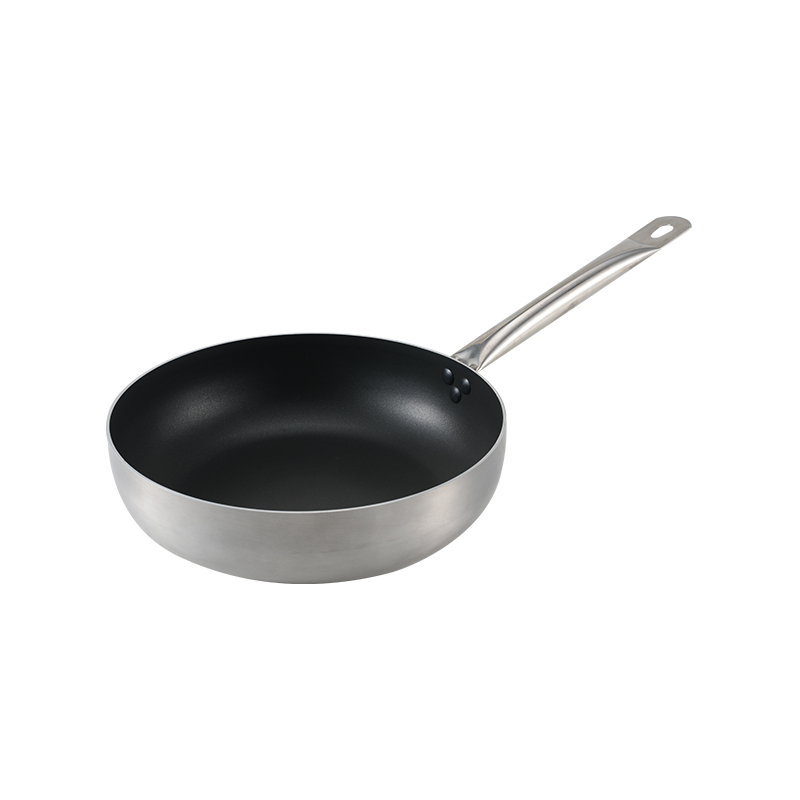What Makes Aluminum Frying Pans a Popular Choice Among Chefs?
May 15, 2025
Among the diverse options available to both home cooks and professional chefs, the Aluminum Frying Pan stands out as a favorite. Its widespread popularity is rooted in its superb heat conductivity, lightweight construction, and adaptability to modern kitchen technologies. This is especially true for the Aluminum Alloy Frying Pan, Aluminum Deep Frying Pan, and Aluminum Frying Pan Induction models, each bringing its own strengths to the kitchen.
One of the primary reasons chefs gravitate towards the Aluminum Alloy Frying Pan is its exceptional heat distribution. Unlike some metals that form hotspots, aluminum ensures even cooking across the surface, reducing the risk of burning food. This uniformity is critical for delicate tasks such as searing scallops or sautéing vegetables to perfection. The alloy construction also boosts durability, making the Aluminum Alloy Frying Pan a long-term investment for commercial kitchens.

The Aluminum Deep Frying Pan, on the other hand, offers a practical advantage for chefs who need extra depth for frying, simmering, or preparing sauces. Its design allows for higher volumes without compromising stability or heat retention. Whether it’s deep-frying tempura or simmering a large batch of stew, the Aluminum Deep Frying Pan is built to handle the volume and demands of a professional kitchen environment. Its sides are typically higher than standard pans, minimizing splashes and keeping the cooking area clean and efficient.
Another innovation that has captured the attention of modern chefs is the Aluminum Frying Pan Induction. Traditional aluminum pans were incompatible with induction cooktops, but advancements in cookware design have changed that. Now, with magnetic bases added to the pan structure, the Aluminum Frying Pan Induction variant brings the benefits of aluminum to induction cooking. This combination of speed and energy efficiency is particularly appealing in fast-paced kitchens where time and precision are everything.
Chefs appreciate the lightweight nature of these pans. A Aluminum Alloy Frying Pan is significantly lighter than its stainless steel or cast iron counterparts, reducing wrist strain during long cooking hours. This is a subtle but important factor, especially in commercial settings where pots and pans are in constant use. The ease of handling not only enhances the cooking experience but also reduces the risk of accidents in busy kitchens.
Moreover, the Aluminum Deep Frying Pan offers versatility beyond frying. Many chefs use it to braise, sear, and even roast small portions in the oven. Thanks to its oven-safe design and sturdy handles, it can transition from stovetop to oven seamlessly. This kind of flexibility allows chefs to experiment with different techniques and execute complex recipes using a single piece of cookware.
Another aspect that makes the Aluminum Frying Pan Induction highly attractive is its energy efficiency. Induction cooking is known for its speed and control, and when combined with the rapid heat transfer of aluminum, it creates a powerful culinary tool. The Aluminum Frying Pan Induction heats up quickly and responds to temperature changes instantly, allowing chefs to fine-tune their cooking process in real-time.
Cleaning and maintenance also play a role in the widespread adoption of aluminum cookware. The Aluminum Alloy Frying Pan often comes with non-stick coatings that resist residue buildup, making post-service cleanup faster and more convenient. Even when not non-stick, aluminum’s smooth surface is relatively easy to clean with minimal scrubbing.
The affordability of aluminum-based cookware compared to other materials makes it accessible without sacrificing performance. Chefs can invest in high-quality Aluminum Deep Frying Pans or Aluminum Frying Pan Induction models without straining their budget, making it easier to equip an entire kitchen with reliable tools.
 English
English русский
русский Français
Français Español
Español Português
Português عربى
عربى














